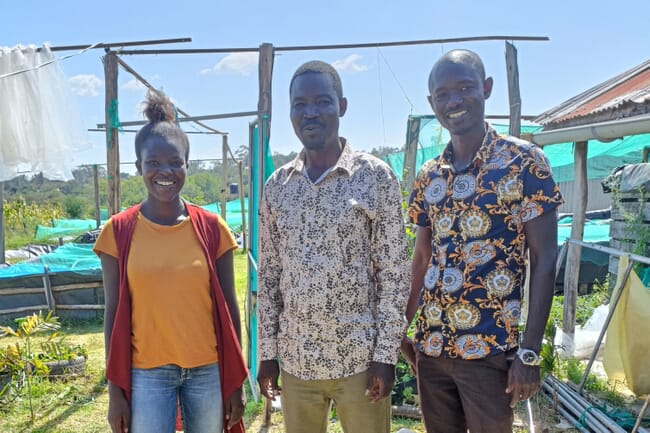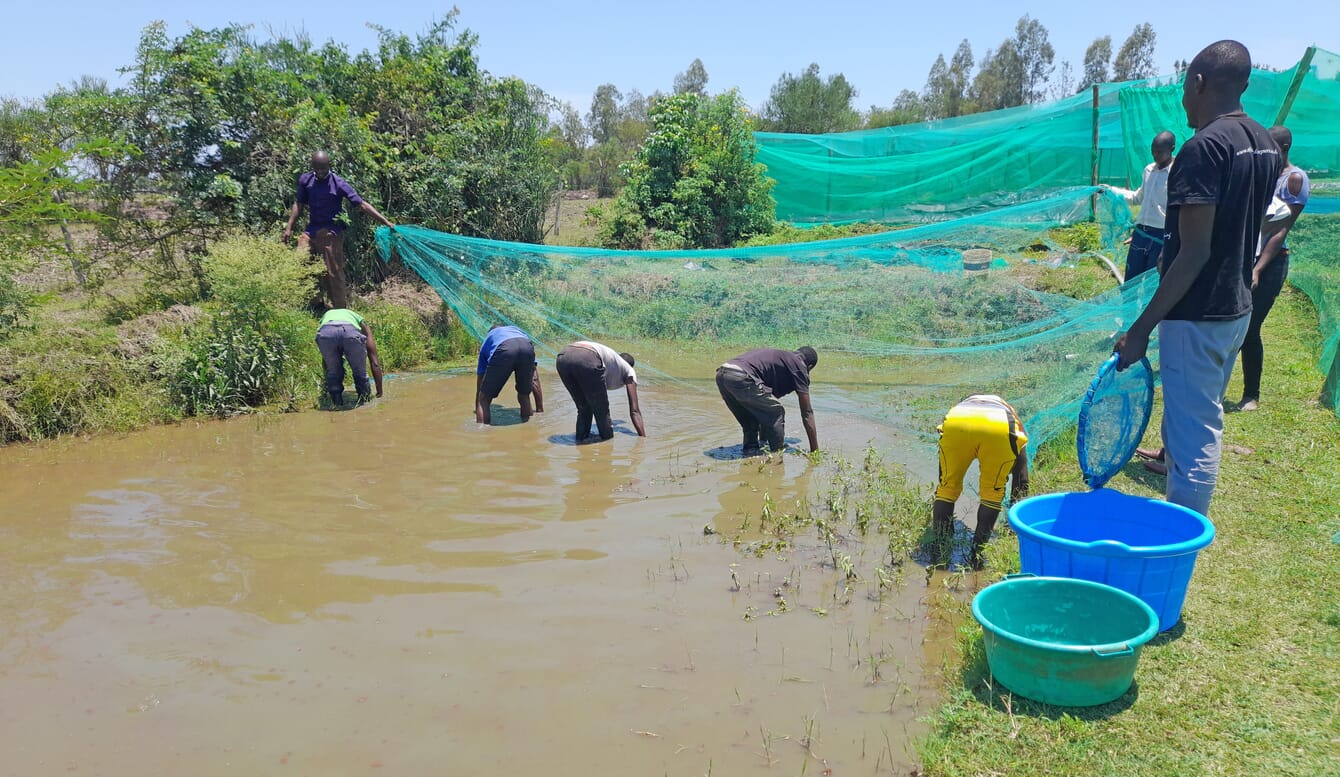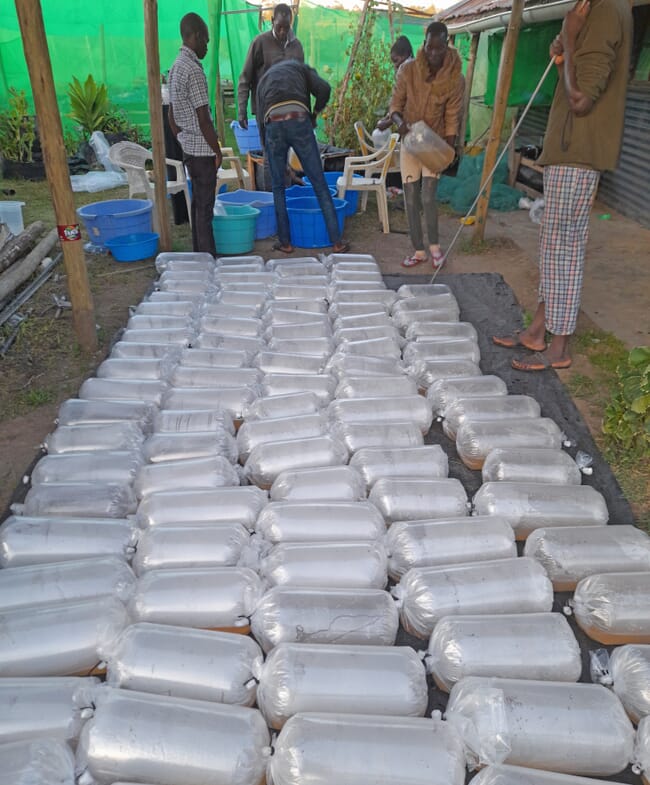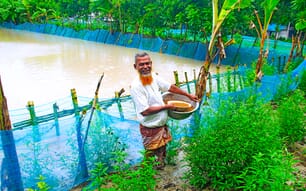
The farm's primary focus is cultivating tilapia – driven by the substantial demand in comparison to catfish – and offers customers in Kenya a variety of products, including tilapia and catfish fingerlings and tilapia broodstock
Can you tell us about your background and how you got into fish farming?
I initially worked as an accountant in different organisations within the NGO sector and I took up fish farming as a hobby in 2002. The turning point came in 2007 when I sold 200 catfish, making about KES 40,000 ($252), igniting my interest in commercial fish farming. I made the full commitment to this venture in 2010.
What do you produce?
We offer a variety of products, including tilapia fingerlings (300,000 per month), catfish fingerlings (5,000 per month) and tilapia broodstock. Our primary focus is on cultivating tilapia, driven by the substantial demand in comparison to catfish.
What sort of production systems do you operate?
Our production units consist of different types of ponds:
- Raised nursery ponds (average 12 m²), with stocking densities of 1,000 fish per square metre.
- Lined nursery ponds (average 70 m²), with stocking densities of 200 fish per square metre.
- Earthen nursery ponds (average 200 m²), with stocking densities of 500 fish per square metre.
- Earthen ponds for broodstock (average 300 m²) with stocking densities of 300 fish per pond or 40 fish per hapa.
- Outgrower ponds (average 250 m²), with stocking densities of four fish per cubic metre.

At Muga Fish Farm the earthen ponds for broodstock average 300 square metres
Could you explain what services you offer?
In addition to our diverse product range, we provide services including pond construction, training and mentorship.
As part of our commitment to supporting women and youth in aquaculture, we established the Kendu Aquaculture Youth Group in 2017, currently comprising 12 active members. This group, trained by our farm, has successfully constructed over 40 ponds.
We also operate a robust training and mentorship programme designed to assist those interested in starting or facing challenges in running a fish farm. Our focus, particularly on the youth, integrates them into our nursery programme. Our training programmes are always tailor made, based on the needs of the farmers or trainees. Some of the training courses we have conducted include 3-day sessions on innovation, 3-day sessions on value addition, and 5-day sessions on general farm management. The mentorship extends beyond training to ensure the success of the individuals we engage with.
What feedback have you had from clients?
The positive response from our clients is evident through the numerous referrals we consistently receive. Additionally, other organisations have expressed interest in forming partnerships with us, seeking to have their clients trained and mentored by our team. These indicators underscore the favourable feedback we've garnered from our clientele.

Muga's tailor-made training programmes are based on the needs of the farmers or trainees and have included 3-day sessions on innovation, 3-day sessions on value addition, and 5-day sessions on general farm management
Where do you source your feeds from?
We procure our feeds from reputable suppliers – such as Bayrise, Aller Aqua Feeds and Tunga Nutrition – ensuring a consistent and high-quality supply.
Where do you sell your products?
We sell fingerlings to local cage-based fish farmers around Lake Victoria and pond-based farmers across Kenya, primarily focusing on the western region. As for table-sized fish, we operate a small depot where our harvested fish are stored, allowing customers to purchase fish directly.
What are some of the biggest challenges you face?
Water quality issues and predation pose significant challenges for us. During the rainy seasons, when the river – our primary water source – becomes turbid, we encounter high fingerling mortalities.
Is there a project or achievement that you are particularly proud of?
Winning the Best Innovative Fish Farmer Award in 2021/2 remains a source of pride for us. This prestigious accolade, presented annually by Food Tech Africa and organised by Lattice Aqua – with sponsorship from Skretting, the Dutch Embassy and other stakeholders – has been a testament to our commitment to innovation.

The farm sells fingerlings to local cage-based fish farmers around Lake Victoria and pond-based farmers across the western region of Kenya
Have you seen a change in government involvement with aquaculture in Kenya?
Yes, the government is actively working towards aquaculture development by providing assistance to farmers through training programmes and the provision of essential inputs. Furthermore, I've witnessed significant strides in the sector with the introduction of improved tilapia strains by KMFRI. We are currently utilising their F8 strain, and it has resulted in a noticeable enhancement in our productivity, particularly in terms of improved growth rates.
What do you think the government should do to change the aquaculture industry in Kenya?
The government should focus on funding research to improve genetics. Additionally, addressing tax issues on imported raw materials and inputs used in feed and seed production would further stimulate growth and sustainability in the sector.
How do you see Muga Fish Farm evolving and expanding in the next five years?
Our vision involves excelling in innovation and technology, aiming to become one of the leading players in the industry. We have set ambitious targets: we’re planning to produce 500,000 tilapia fingerlings, 20,000 catfish, and 1,000 broodstock per month from June. Furthermore, the implementation of a recirculating aquaculture system (RAS) is underway, with the aim of doubling our table-size fish production, from 500 kg to 1 tonne, within the next two years.








